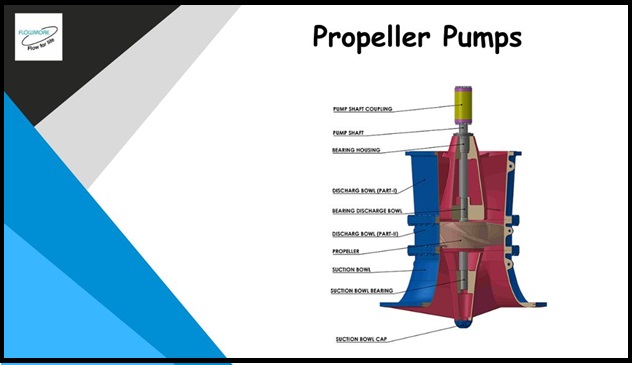You can use PROPELLER PUMPS in
different settings where you need a high flow of fluid. These pumps usually
have a linear path of fluid flow and a low-lift impeller. The best thing about
the feature of these specific pumps is that you can set them in any orientation
you want.
You can set it horizontally, vertically, or at an angle and
get the same results. This is because regardless of the orientation of the
propeller pumps, the impeller stays below the water level and the motor above
it.
The Basics of Propeller Pumps
Here are a few basic aspects that you should know about the
PROPELLER PUMPS.
Working principle:
The working principle of these specific types of pumps is
based on the impeller head. This impeller is specially designed with a
propeller blade which facilitates the drawing of water out of the discharge
outlet and up the outer casing.
While operating, the pump draws water using the rotating
impeller. The water usually moves straight up the casing and can even move up
through the discharge pipe which is usually angled.
Usefulness:
The usefulness and design of the PROPELLER PUMPS make
them useful for different applications including chemical plants, water
treatment systems, agricultural applications, and other settings where you do
not require a high head value.
The Design
The design of the angled and vertical PROPELLER PUMPS allows
the drive motor to stay above the water level. This is located on top of the tubular
casing.
The shaft of the pump drive however runs down to the bottom
to reach the impeller head inside the casing. There is a sealed tube inside
that holds the specific types of bearings for support.
In addition, the impeller of these pumps is specially
designed as well. These have rotating blades that resemble a propeller, which
is why these pumps are called PROPELLER PUMPS. This unique design helps
in transferring liquid easily through the pump.
There may be one or several stages of it depending on the
specific design. This eventually determines the performance of the suction head
located in the casing housing the impellers.
These impellers usually are installed by a strainer
attachment. This prevents entry of unwanted foreign objects into the system.
Different Applications
Depending on the setting and design of the propeller pumps,
the application may vary.
For example, if you use it as a horizontal propeller pump,
you can use it for drawing water through a bulkhead or reservoir wall since the
motor is watertight and can stay submerged.
If you use a mobile unit, such as the free-floating variant
of these specific pumps, you can use it on a purpose-built pontoon and move
around the water body as desired.
If you use angled pumps, you can draw water from reservoirs
that have steep, inclined walls.
Conclusion
Compared to other pumps, propeller pumps can offer a large
number of benefits. These machines do not need prior priming to operate, can
handle large flow requirements, and can also pump out suspended sand.

Comments
Post a Comment